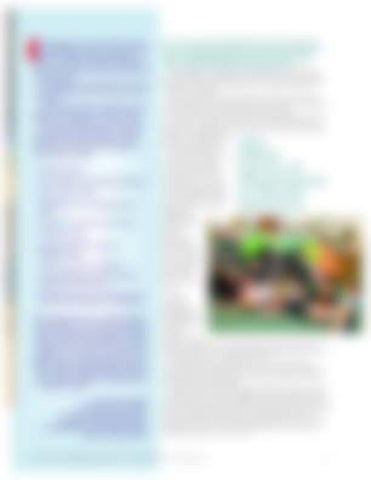I
t’s the beginning of a new school year for thousands of Montessori students around the world. For some, it will be their first experience in a Montessori classroom; for others, it will be a return to the learning environment that they have known for years. Dr. Maria Montessori opened her first school, Casa dei Bambini, in Rome, Italy more than a century ago. After one hundred years, the Montessori approach has proven that it is still vibrant and adaptive to the challenges of the 21st century. As parents and educators, who have spent years around Montessori children, we know that Montessori works! Despite the proof of more than one hundred years of positive results, questions remain: What is Montessori? How is it different than traditional education? Will it work for my child? Isn’t Montessori a very structured environment? Do Montessori classrooms have structure? Normalize my child? Are we crazy to enroll our child in a Montessori school? Is Montessori just for young children? Can our child adjust to a traditional education after years in Montessori? How can we find/create an elementary or secondary Montessori program for our children?
For more than forty years, I’ve tried to help parents sort all this out, so they could reassure themselves that Montessori isn’t going to leave their children academically handicapped and unable to make it in the ‘real’ world. It’s still not easy to put Montessori into context, when the rest of the world seems so completely committed to a very different approach to raising children. Montessori 101 was written to help parents begin to discover and reconfirm what Montessori children know — Montessori works! — Tim Seldin, President The Montessori Foundation co-author of The Montessori Way, The World in the Palm of Her Hand, and Celebrations of Life; author of How to Raise an Amazing Child.
There are more than four thousand Montessori schools in the United States and Canada and thousands more around the world. Montessori schools are found throughout Western Europe, Central and South America, Australia, New Zealand, Africa, and much of Asia. The movement is widespread in countries such as the Netherlands, the United Kingdom, Ireland, India, Sri Lanka, Korea, and Japan, and it is beginning to expand into Eastern Europe, the republics of the former Soviet Union, and China. There is tremendous diversity within the community of Montessori schools. Despite the impression that all Montessori schools are the same, perhaps a franchise, no two Montessori schools are alike. Across the United States and Canada, we can find Montessori schools in almost every community. They are found in church basements, converted barns, shopping centers, former public schools, and on expansive campuses, with enrollments of hundreds of children and the air of stature and stability. We can find them in suburban and inner-city publicschool systems. Montessori schools are often found in charming homes — the outcome of the individual vision of the owner/director. Many are found in affluent communities, but just as many serve working-class neighborhoods and the poor. We can find Montessori in Head Start programs, child-care centers in our inner cities, migrantworker camps, and on Native American reservations. Some Montessori schools pride themselves on remaining faithful to what they see as Dr. Maria Montessori’s original vision, while others appreciate flexibility and pragmatic adaptation. Each school reflects its own unique blend of facilities, programs, personality, and interpretation of Dr. Montessori’s vision. Most Montessori schools begin with three-year-olds and extend through the elementary grades. Every year, more schools open middleschool and infant-toddler programs, and Montessori high schools are beginning to appear more frequently. Montessori schools offer a wide range of programs. Many are focused on meeting the needs of the working family. Others describe themselves as college-preparatory programs. Public Montessori programs pride themselves on serving all children, while many independent schools work hard to find the perfect match of student, school, and family values. The Montessori Foundation and The International Montessori Council (IMC) celebrate the diversity to be found among Montessori schools. Just as each child is unique, so are the schools.
©Tomorrow’s Child Magazine Montessori 101: Special Issue • www.montessori.org
The Many Faces of M on t e s s o r i in North A me r i c a
5
